
By Sebastien Hayez. Published November 15, 2023
Principles of Logo Design
PRINCIPLES OF LOGO DESIGN, A Practical Guide to Creating Effective Signs, Symbols, and Icons
George Bokhua
Winner of the 2022 American Graphic Design Award for Book Design from Graphic Design USA
Books explaining how to create a good logo are quite common, as are those describing how to create a good layout or an effective poster. However, compared to these other disciplines, logos are extremely varied and changing signs.
Georgian graphic designer George Bokhua has some fifteen years' experience and a number of training courses distributed by Skillshare. For just over a year, the author worked independently on the design and writing of this 224-page book.
Shape
Simplicity and balance seem to be the watchwords of the author, who is also the graphic designer of his own book: handling the book proves totally easy, as its weight and format make it a fairly dense but light object, easily transportable in a small bag.
Chromatic sobriety is also the hallmark of the logo designer, and color is only used to add meaning. The cover is also very sober, without being typically Swiss. The only regret is the dark gray heads in a light sans serif, all on a black background. The author's name, for example, is almost invisible if you don't pay attention.
The layout is crystal-clear: one typeface, one weight, 3 sizes for a single justification. In this respect, the layout is modern and more reminiscent of a tablet application than a printed book. However, the reading experience is much lighter and more pleasant.

Contents
The book is divided into 5 chapters, and then into a total of 66 entries, i.e. around a double-page spread for each.
Chapter 1: General concepts
If simplicity seems to be the direction taken by the author, he allows himself an economy of prior definition that could be detrimental. In fact, the logo is not rigorously defined, and this lack of definition makes it difficult to understand the richness of this type of sign. Moreover, by sometimes using the terms sign, symbol or emblem without respecting these nuances, the author communicates like a designer who knows the truth, rather than revealing a facet of what a logo can be.
What's more, including the notion of the golden ratio or the Fibonacci sequence in the second entry could prove as counter-productive as introducing counterpoint to a child just learning solfeggio.
Gradually, we come to understand that Bokhua views a good logo through the prism of modernist concepts, in line with the productions of International Style. Formal minimalism will therefore be the guide for shaping a successful logo.
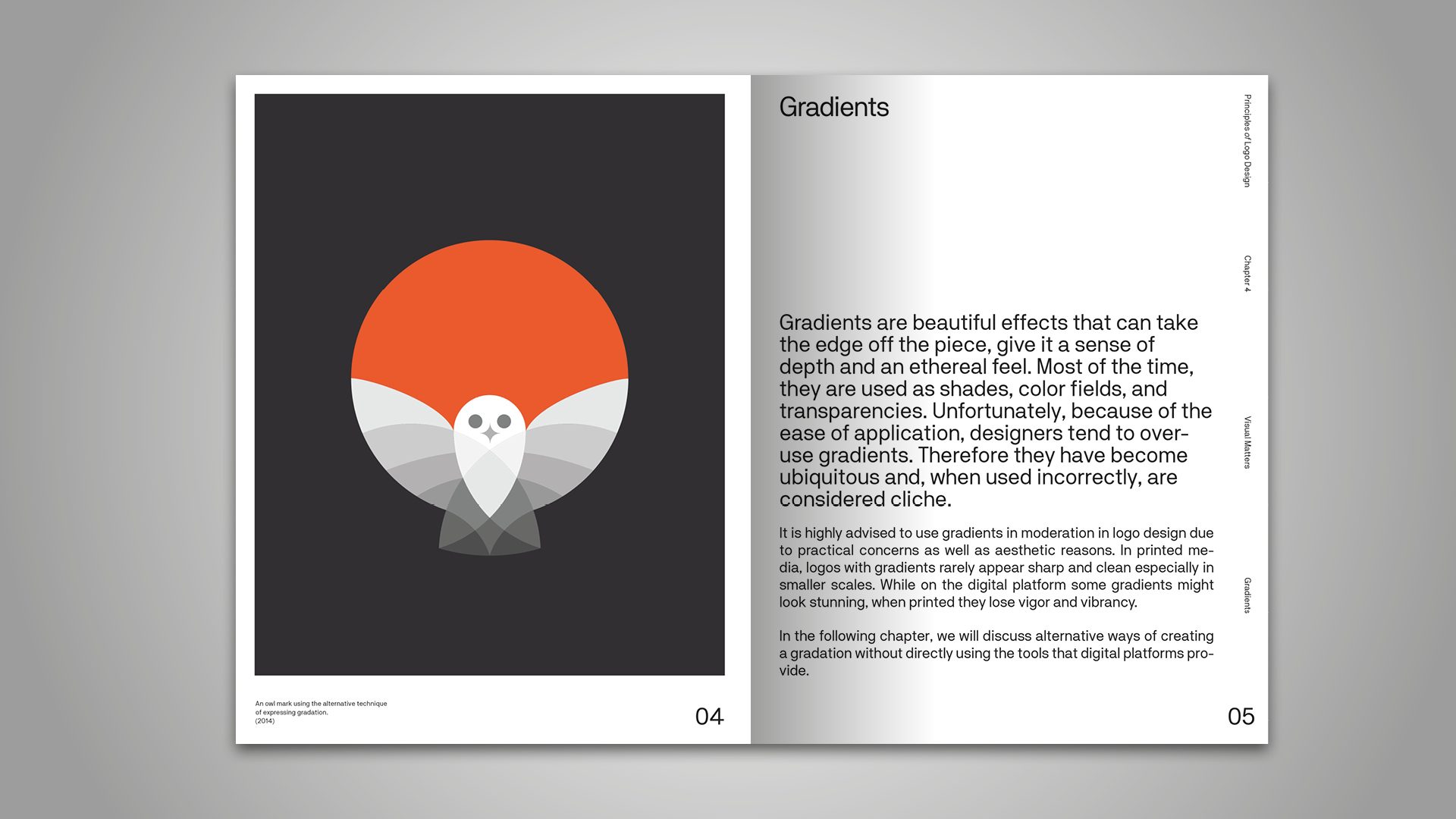
Chapter 2: different types of logos
In thick volumes compiling logos, a taxonomy emerges by habit. Here, Bokhua takes up what makes sense, classifying them into different families: pictographic logos, stylized letters, abstract logos, wordmarks, monograms, negative spaces, declensions, pictograms and visual identity motifs.
Here again, some of the entries, though judicious, could have found their place further on in the book.
It's perhaps a pity that the author doesn't approach the perception of the sign in greater depth, without necessarily lapsing into semiotic or gestalt analysis. These two scientific approaches enable graphic designers to be more than experts in form, to become experts in understanding the sign: it's an approach that communicates before its superficiality.
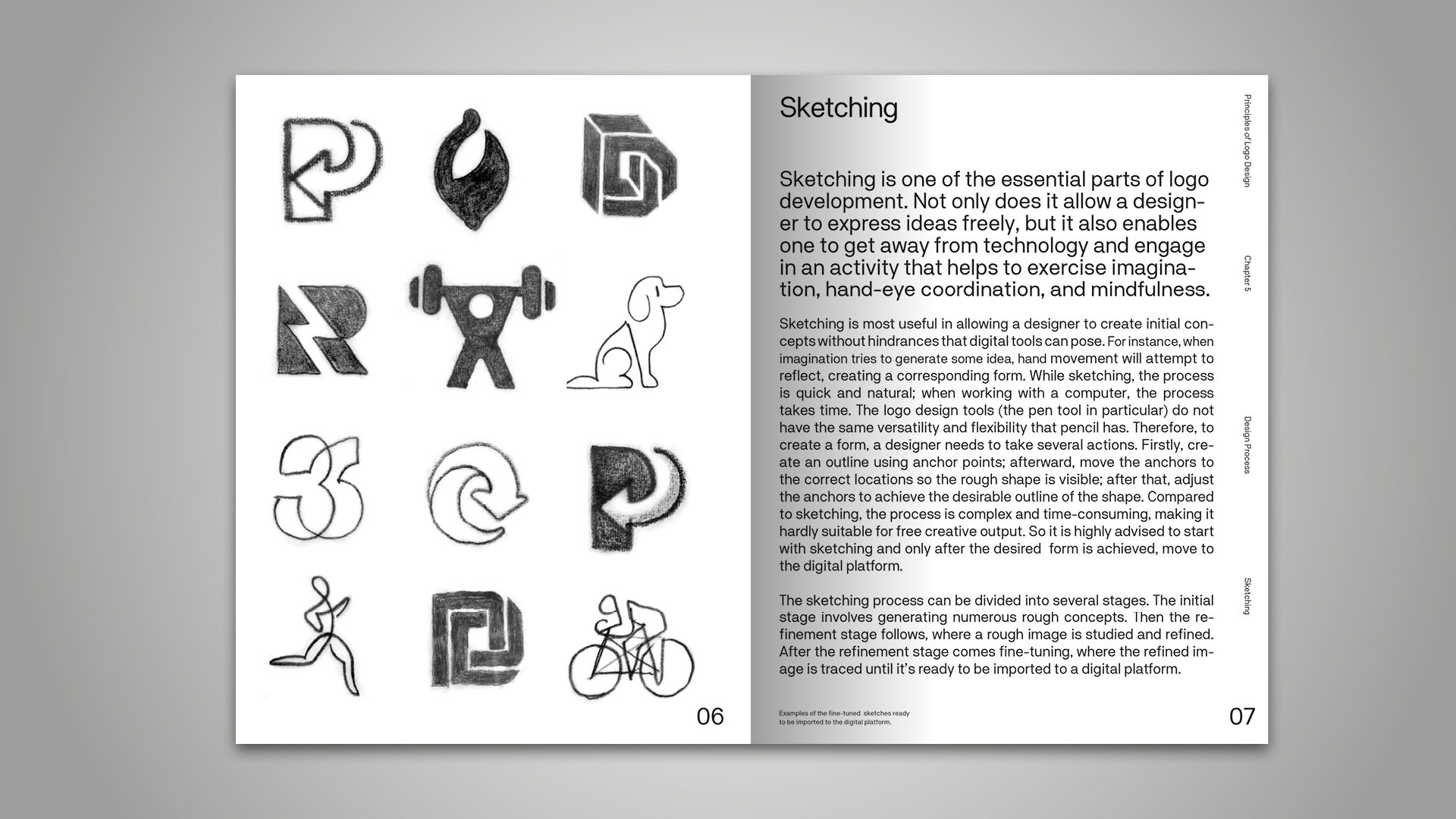
Chapter 3: visual technique
This section takes up just over half the book, and without going into detail, it is an excellent introduction to both creative and formal aspects (gradients, volume, negative spaces, etc.), as well as pragmatic aspects (size, legibility, composition, customer relations, etc.). Separating these two entities would be tantamount to believing that doing and knowing are distinct, whereas they are intertwined throughout the process.
Experienced designers should not be fooled: many have acquired this knowledge after a few years of practice. This book is therefore a guide for the novice designer or graphic design student.
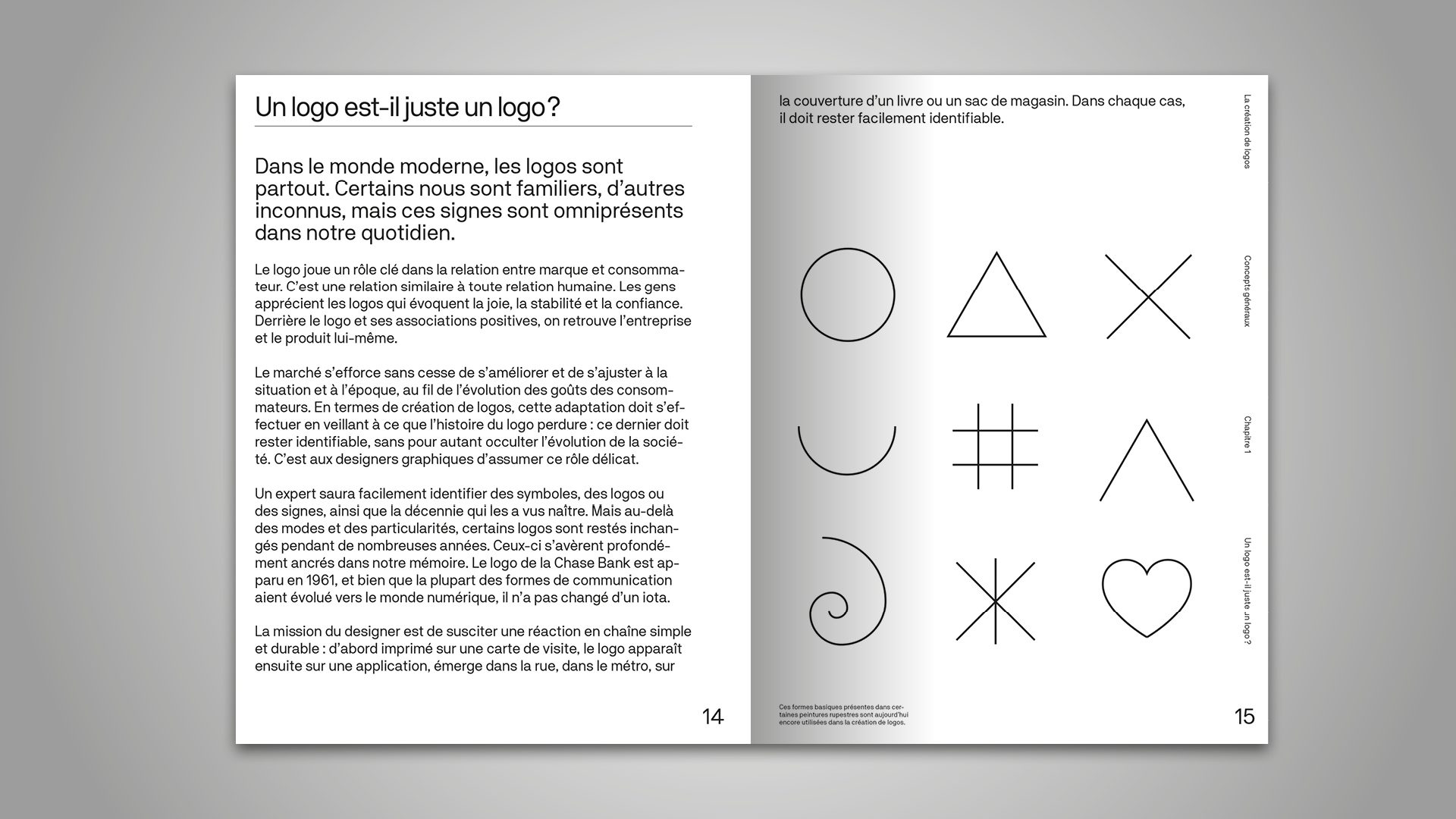
Chapter 4: the creative process
Creativity can't be taught, at best we can provide the keys. Bokhua doesn't offer any clues on how to come up with an idea, or how to really analyze a brief, although he does ask his reader. He does, however, develop a few principles of exchange with the client that may offer promising prospects, but here again, it's a question of human sensitivity and the way you deal with your client.
For me, the author's strong point is his emphasis on formal research in pencil rather than directly on the computer. Younger generations may not be as well-trained in drawing, but just as a musician is first and foremost a good listener, a designer needs to have a sharp eye, and the hand is his real tool. The use of tracing paper also implies a work of adjustment in successive stages, made obvious by the materiality of the support.
The only downside is that, when the author comes to setting the type, his use of vector anchor points shows the limits of his technique. Admittedly, the final result is accurate, but the points are poorly placed, and the type designer's eye will bleed silently.
Perhaps it's this analogy that could have been developed further: a logo designer has to work out his shape like a type designer works out his glyph: negative space, contrast, aperture, optical correction, etc. are all covered, but a more technical development (which the author doesn't seem to have or doesn't want to develop here) would be beneficial to the reader.
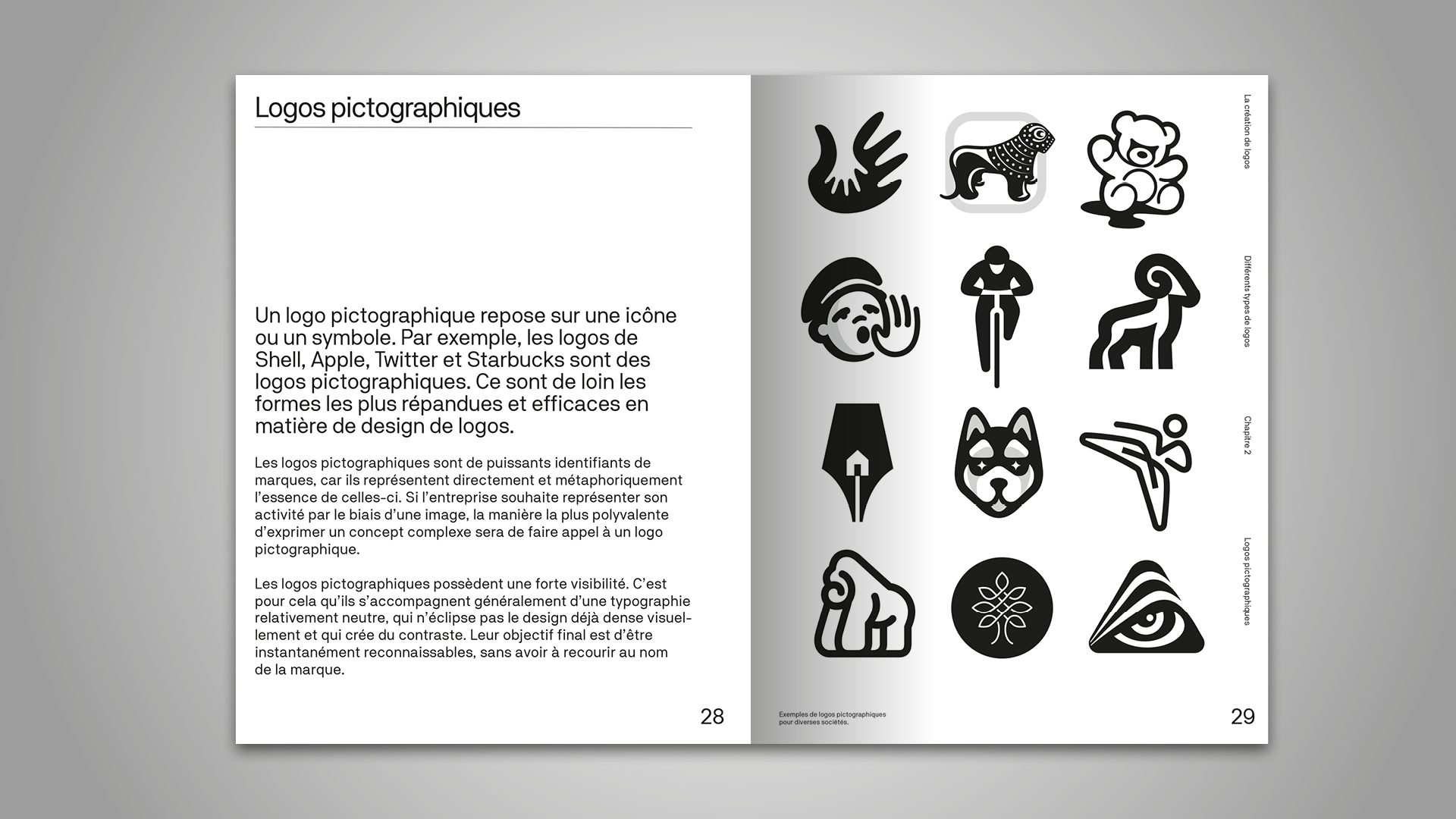
Chapter 5: presentation
A good design can fall by the wayside if it's not properly presented to the customer. The author is well aware of this, and is right to develop this theme at the end, enabling us to understand how to show creative ideas, and then to develop a basic brand manual.
However, rather than introducing pricing (which varies greatly depending on the country, sector and size of the customer) or the studio's framework, I felt it would have been more appropriate to develop a few additional entries on the development of brand manual and guidelines.
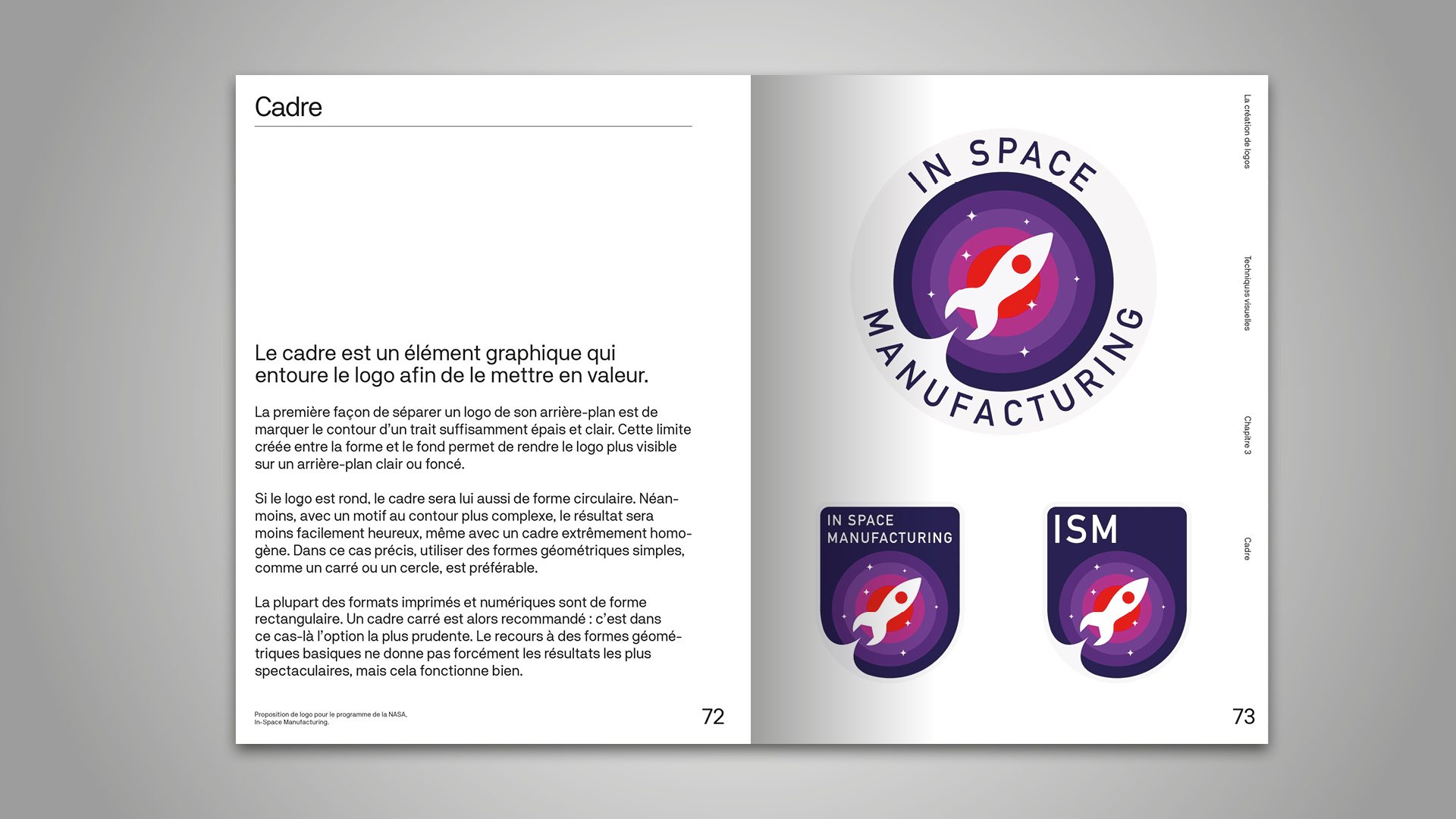
In the end
This book is an excellent introduction to logo design for students, as a complement to their art school courses. However, the theoretical approach is sometimes too light, especially in its vocabulary. The historical aspect is completely overlooked, even though it can provide vital food for thought and understanding.
The clarity of the examples is also limited by the relatively unknown production from the author's portfolio. While these show what he's getting at, they don't open up to more popular creations, showing that the author's theory is justified by the work of great graphic designers.
Of course, there's no such thing as the perfect book, but this one proves to be of respectable quality for the novice designer.
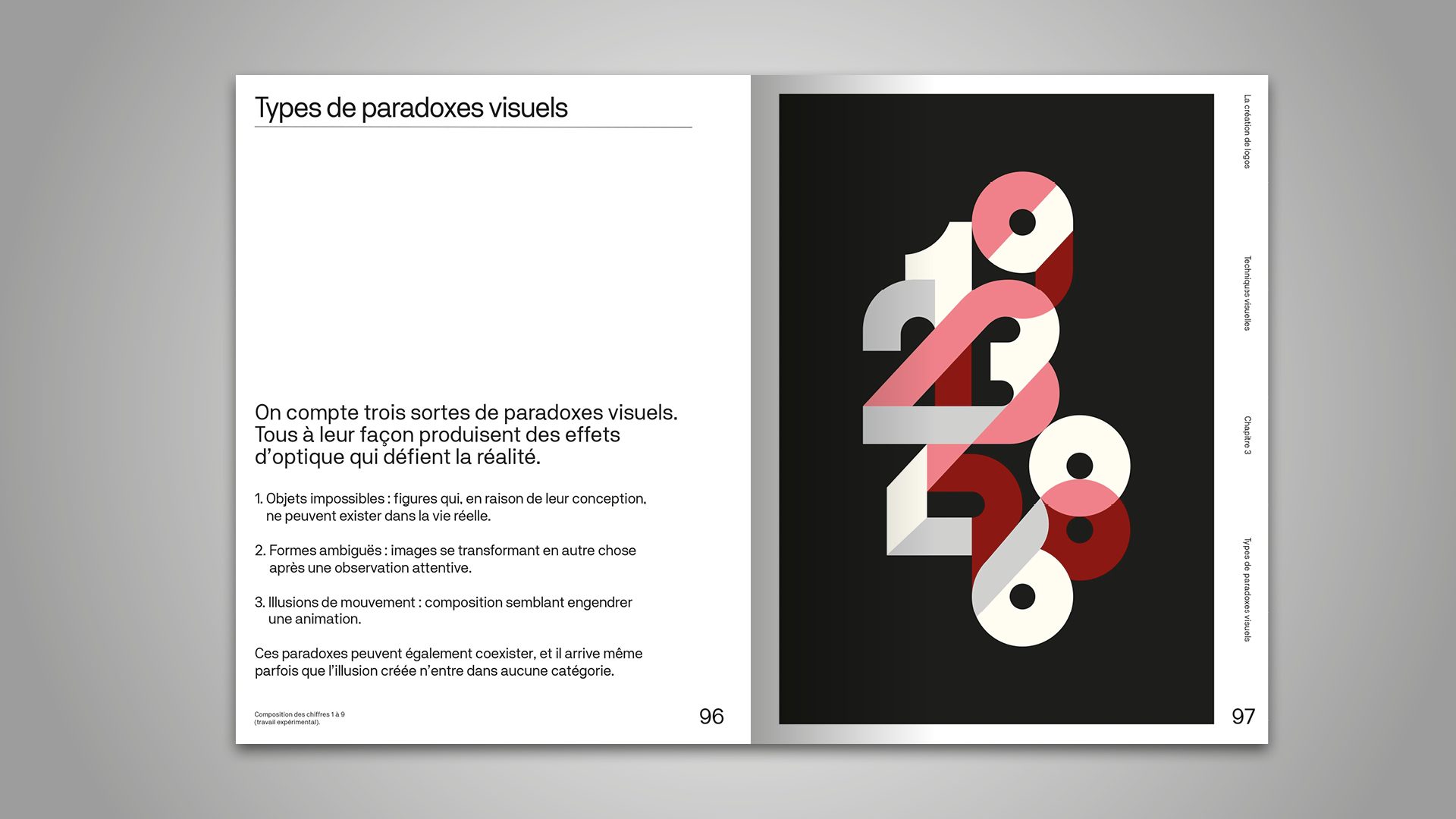
Sales pitch
When you think of a brand, often the first thing that comes to mind is the logo, the visual representation of that product, place, thing, or business. The power of simplicity for these marks can never be underestimated-a logo that comprises simple shapes can communicate a stronger message than a complex one, leaving a lasting impression in a viewer's mind.
In Principles of Logo Design, noted logo designer George Bokhua shares his process for creating logotypes that will stand the test of time. Applying the enduring principles of classic texts on grid systems by Josef Muller-Brockmann and on form and design by Wucius Wong, Bokhua elaborates on his popular online classes, demonstrating in detail how to maximize communication with minimal information to create logos using, simple, monochromatic shapes.
This comprehensive volume includes:
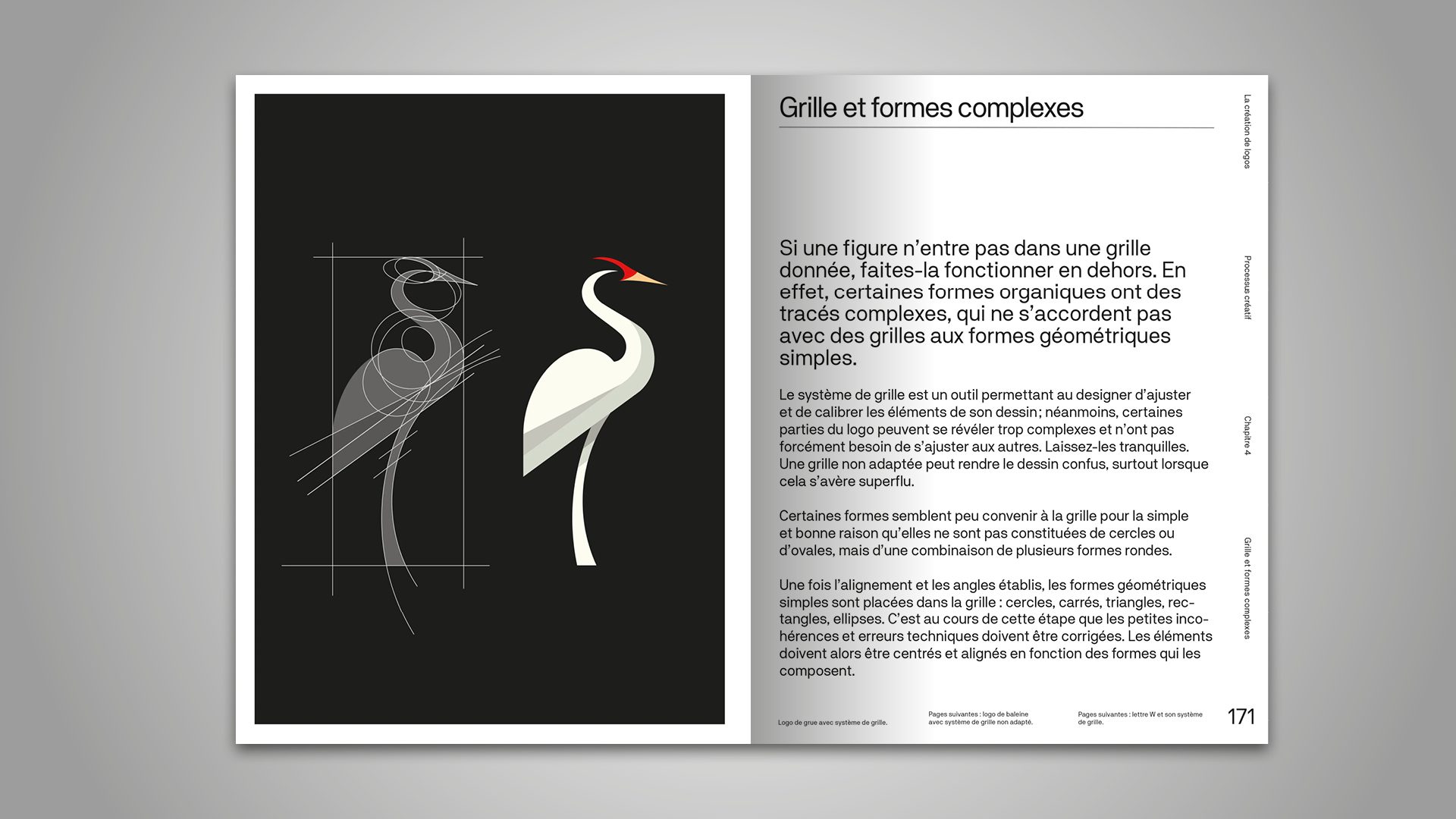
Knowing how to design a great logo is a core skill for any graphic designer. Principles of Logo Design helps designers at all levels of skill and experience conceive, develop, and create logos that are not only pleasing to the eye but evoke a sense of perfection.
___
Publisher: Rockport (USA) / Pyramid (Fr)
Format: Hardcover book, 224 pages
ISBN: 9780760376515 (USA) / 978-2-35017-557-7 (Fr)
Size: 7.48 in x 9.69 in / 189.99 mm x 246.13 mm
Published: August 2nd, 2022 (USA) - 2023 (Fr)
Price: $40 / £28 / €35
___
George Bokhua
Logo designer George Bokhua has more than 15 years of experience in identity design and development. He has worked with a variety of clients all over the world, from small startups to established brands like Disney, New Balance, NFL, Sonic, and Wired magazine. Bokhua, who is well-known for his simple, clean, sophisticated style and the use of grid systems and geometric shapes in his process, teaches three popular classes on Skillshare that serve as an introduction to his approach. He lives in Tblisi, Georgia.